Hardware Labs Black Ice® SR2™ 360mm Multi-Port Radiator Review
The intention of this write-up is to provide information and performance data about the HWLabs SR2 360mm Radiator for inclusion in the Extreme Rigs Rad Round Up 2015. I’ll be keeping the review section short and factual, focusing on presenting the performance data compiled through the numerous tests carried out. Firstly a big thanks to Hardware Labs for providing the review sample of the SR2 360mm!
I was lucky enough to receive a pre-release Multi-Port sample of the SR2 from HWL, but we are told it has the same core as the currently available single port model.
Note: You may notice changes in the data presentation in this rad review as I’m now also including even more thermal testing data for both Push/Pull and Push Only fan installations.
What’s in the Box?
The Multi-Port SR2 sample arrived in full retail packaging – for the SR2 single port which is currently available.
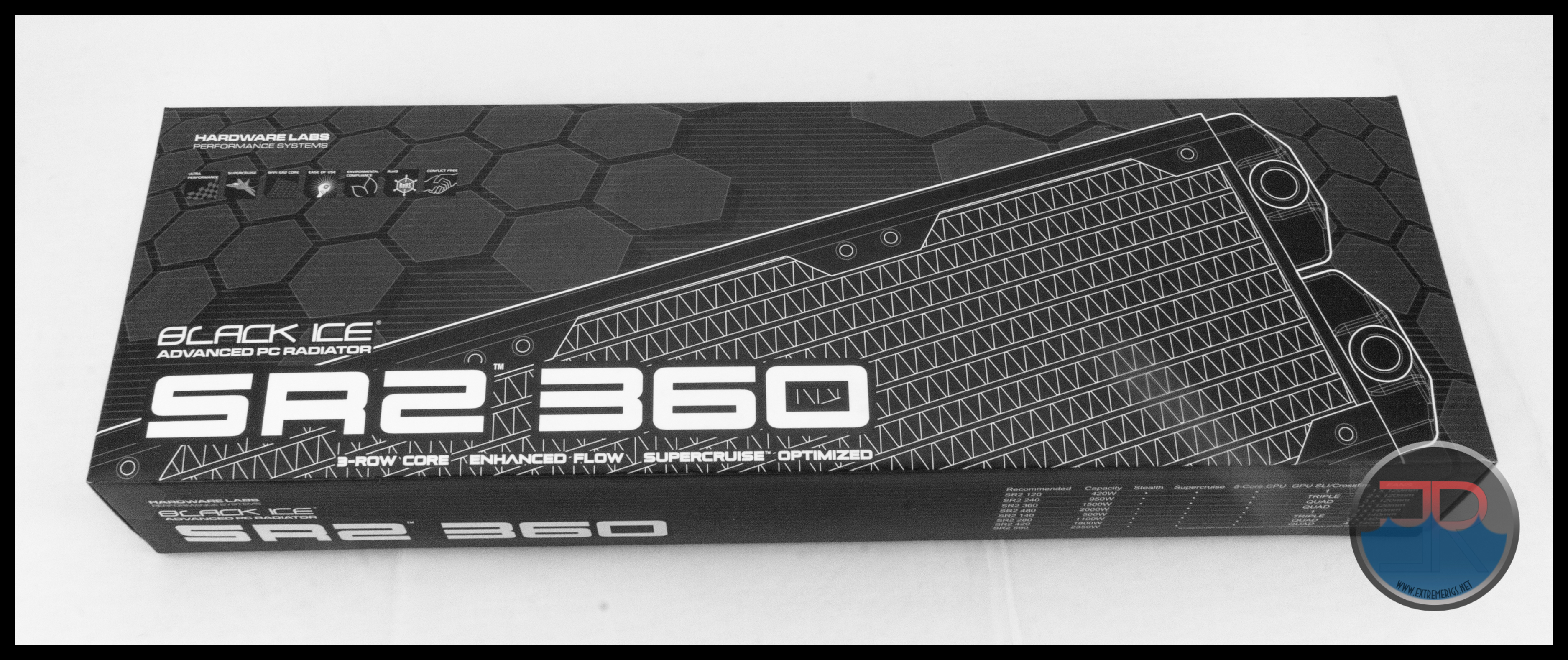 The front of the retail sleeve leaves us in no doubt as to what to expect, while on the back we find a tech drawing and some details on the SR2 radiator.
The front of the retail sleeve leaves us in no doubt as to what to expect, while on the back we find a tech drawing and some details on the SR2 radiator.
On one side we find some performance ratings on the various SR2 models.
Don’t be fooled by the heat capacity numbers – HWLabs provide this heat capacity information which is based on certain industry standards. If you read the test conditions you’ll see that the temperature delta is 25°C. However most end users don’t think that 25°C delta temps are at all reasonable. While some water cooler users only care about lowering noise, plenty also want better cooling, and by hitting such high temperatures your components may end up running hotter than some air coolers. In addition higher coolant temperatures can even have other side effects like stretching out tube – this can cause leaks when a previously piece of tube can no slip out of a lock ring after a few weeks of heat cycling. As always, I’ll be providing the data in the W/10ΔT format which should give a much better impression of what this radiator can really be expected to cool. So while these specs might be accurate for the test conditions, they are not typical. Moving on…
Inside the outer retail sleeve is a protective cardboard box. While removing the review sample the warning sticker about screw length caught on the inside and tore.
I really like the HWLabs style of boxing as the compartment at one end keeps the provided accessories away from the core. It would be nice to see a bubble wrap sleeve over the rad, but otherwise the SR2 has great packaging that should ensure safe arrival to the end-user.
Extent of delivery:
Included in the SR2 Multi-Port package is the following
- 1 x SR2 Multi-Port Radiator
- 12 x M4 x 28mm screws for mounting fans.
- 12 x M4 x 5mm screws for attaching to chassis
- 4 x G 1/4 port plugs.
Note that the 28mm screws are only just long enough to mount fans to the radiator. If using a mounting bracket, or placing fans between the chassis and rad, you will need to provide your own M4 screws of suitable length. 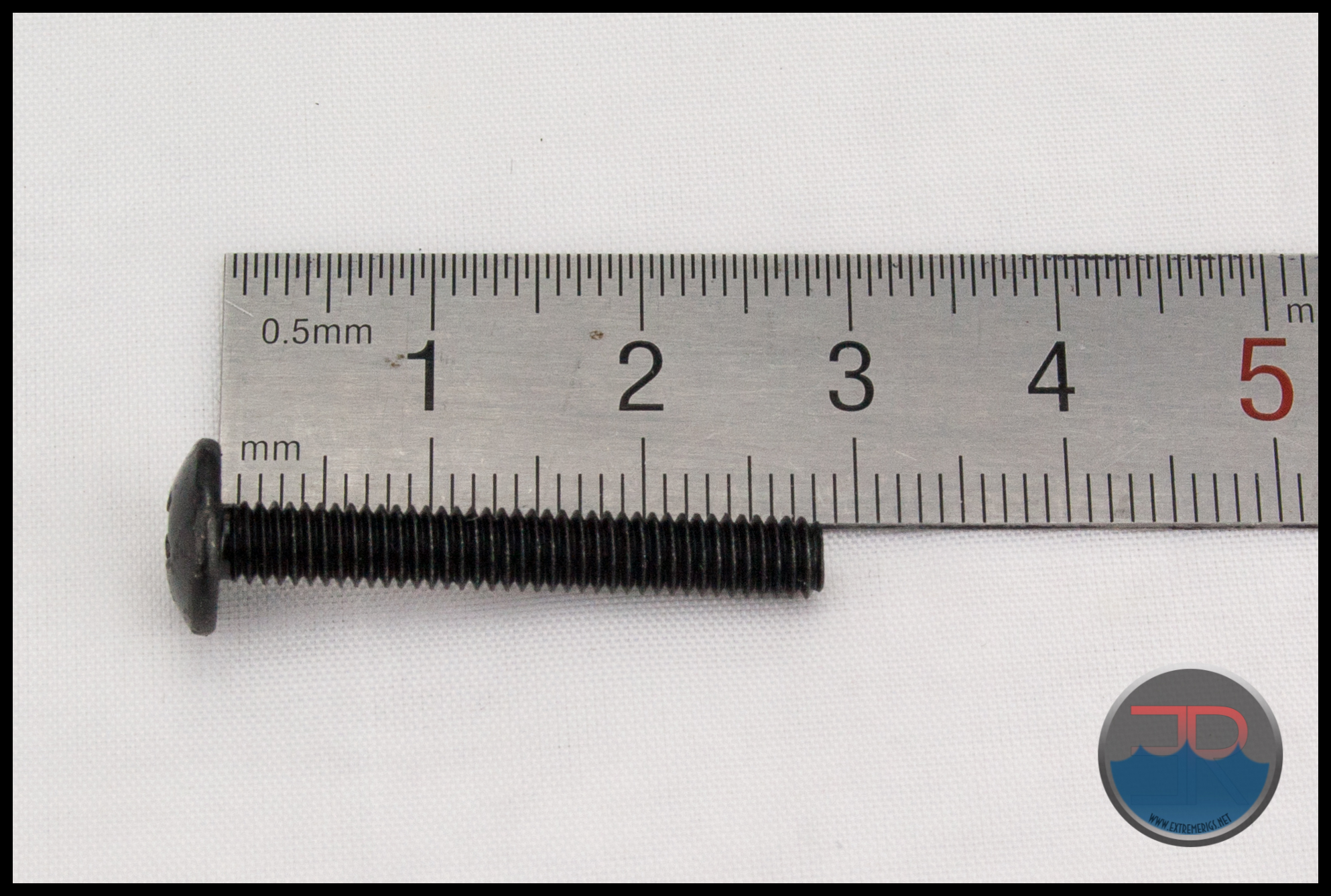 30mm screws usually provide a bit more margin for mounting, and even those are borderline with some of the thicker CaseLabs panels.
30mm screws usually provide a bit more margin for mounting, and even those are borderline with some of the thicker CaseLabs panels.
HWLabs provided 4 x port plugs with the Multi-Port SR2. The hexagon shape makes them appear larger than the round plugs which we are used to seeing. These look very similar to Swiftech’s stop fittings. The option to use an allen key is nice, and a wrench can be used if preferred to tighten them down.
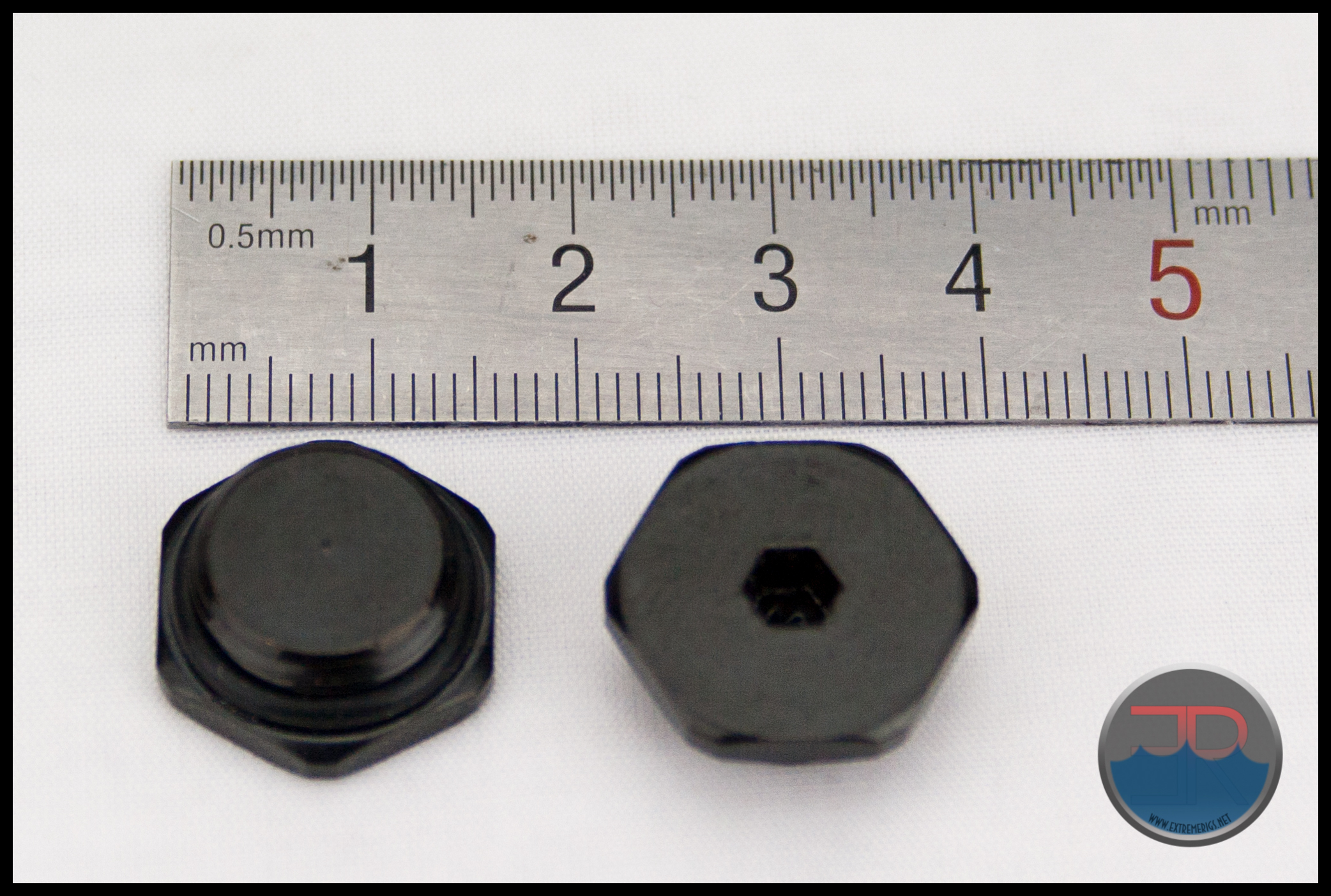 When fitted the plugs seem to have an aggressive meaner look, which I think I like.
When fitted the plugs seem to have an aggressive meaner look, which I think I like.
Onwards to technical specifications!








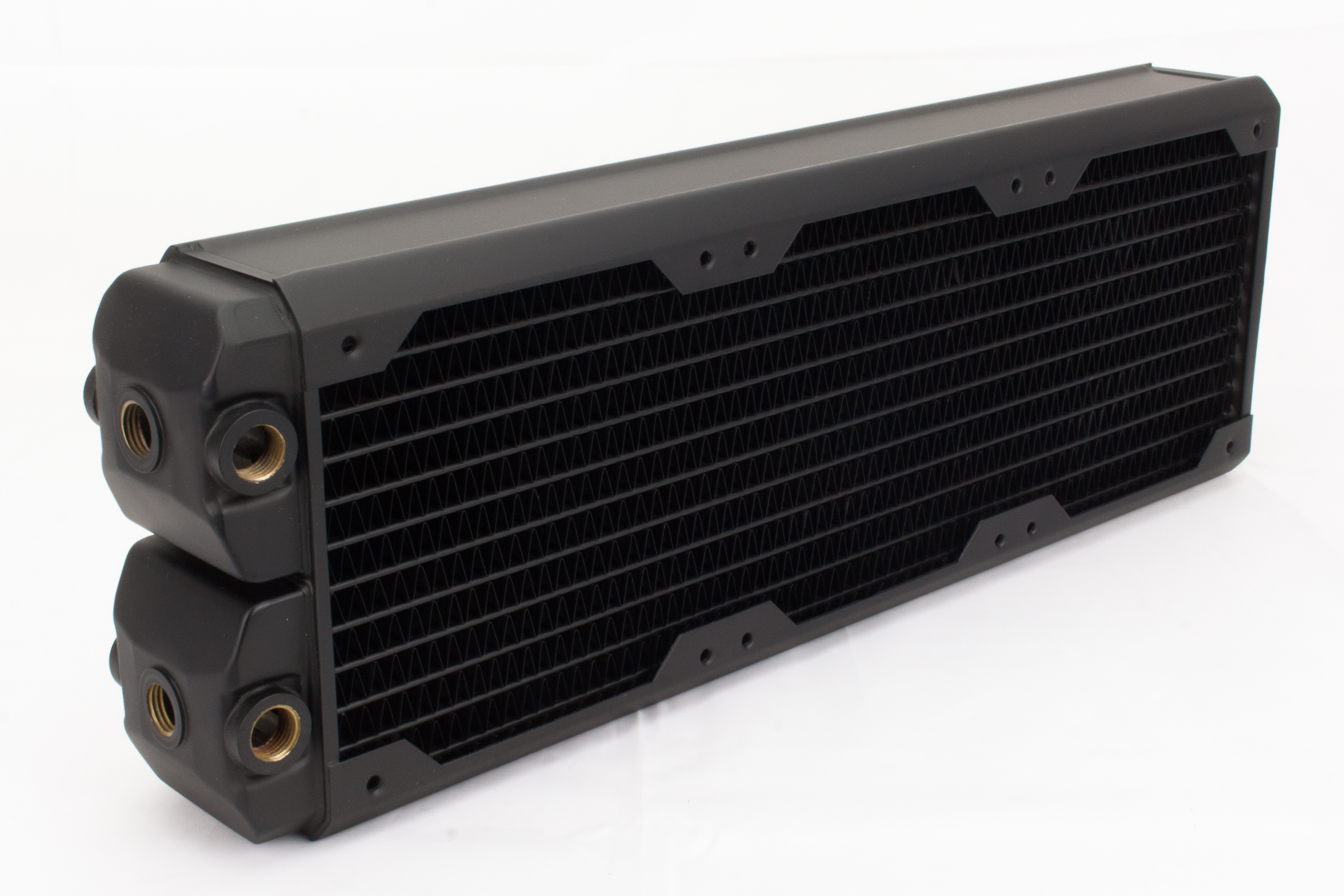
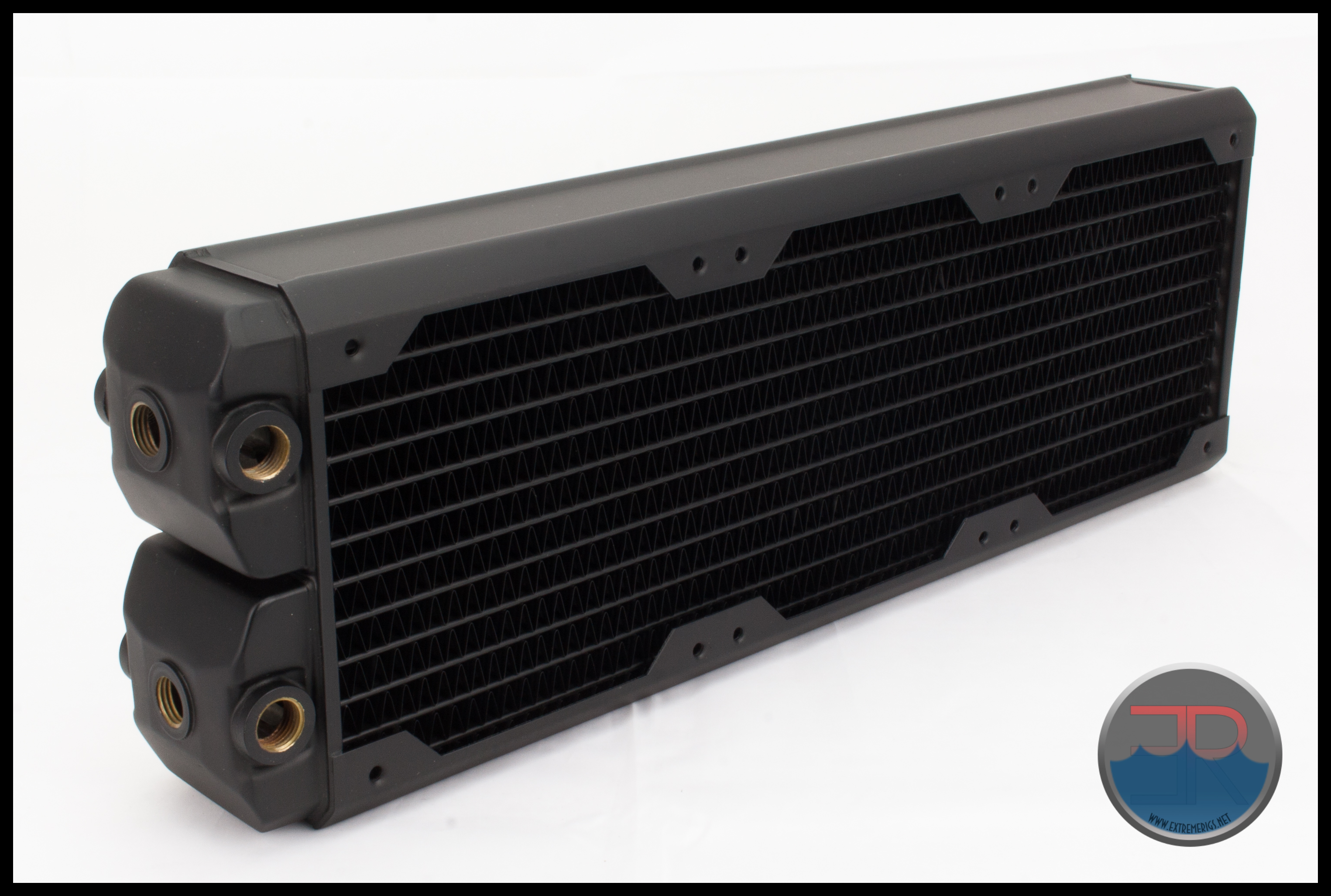
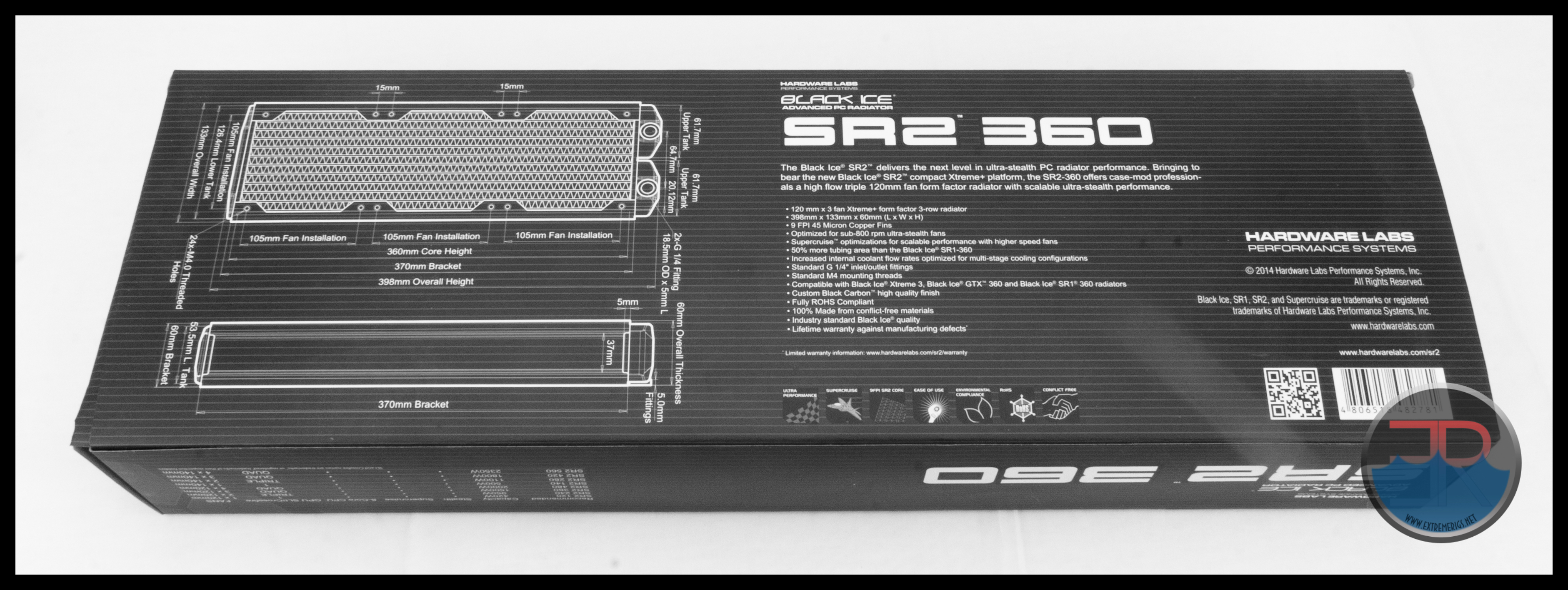
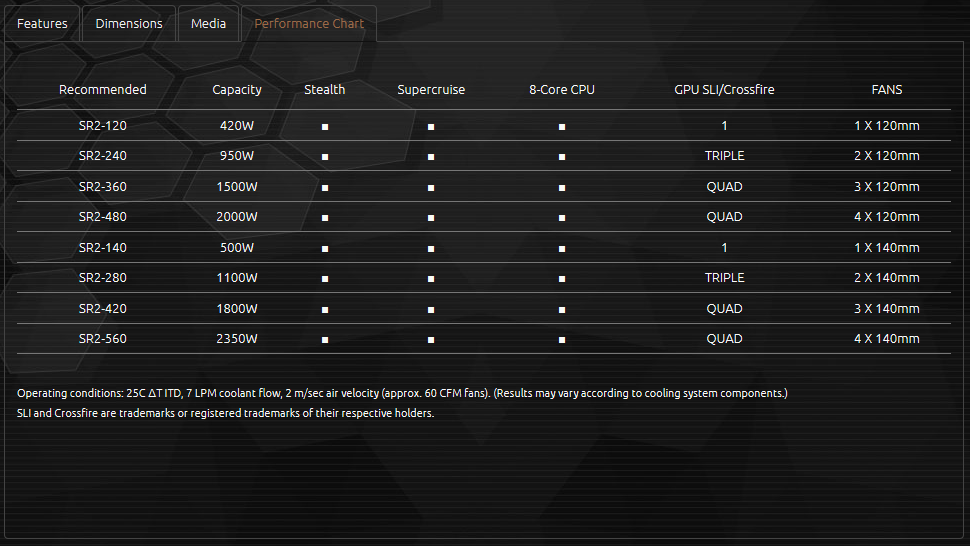
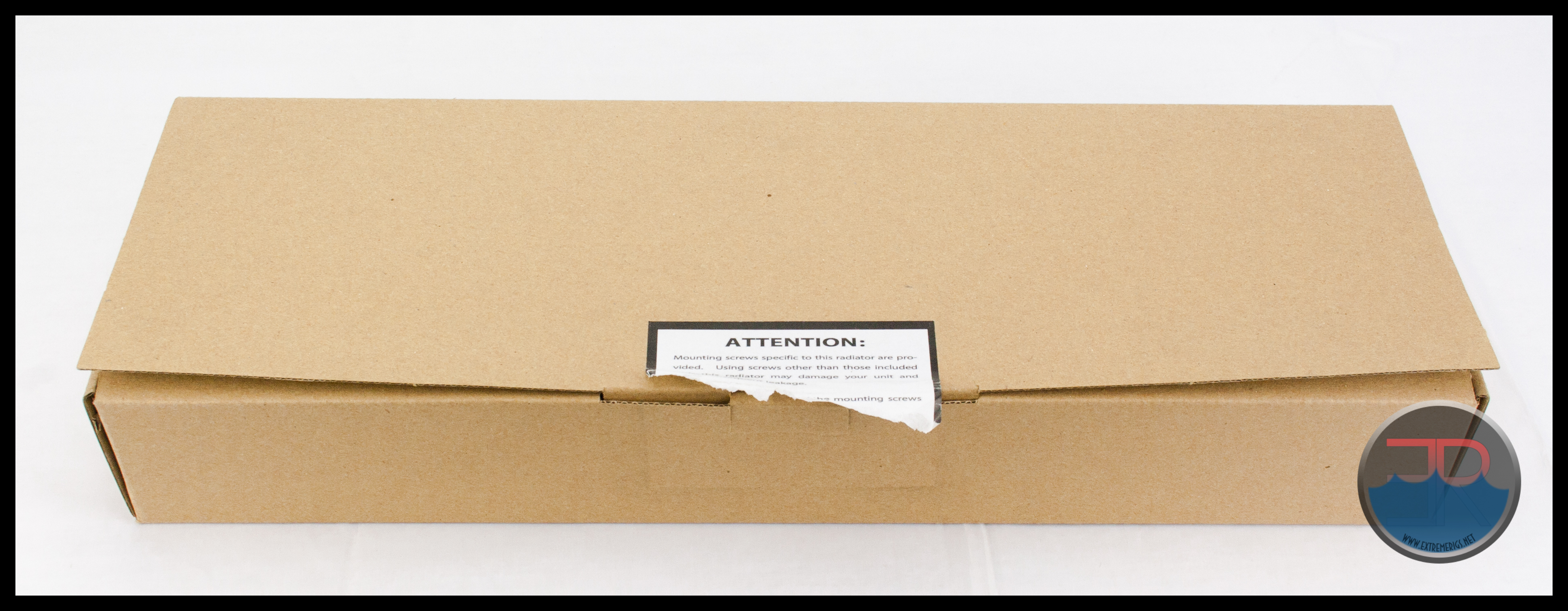
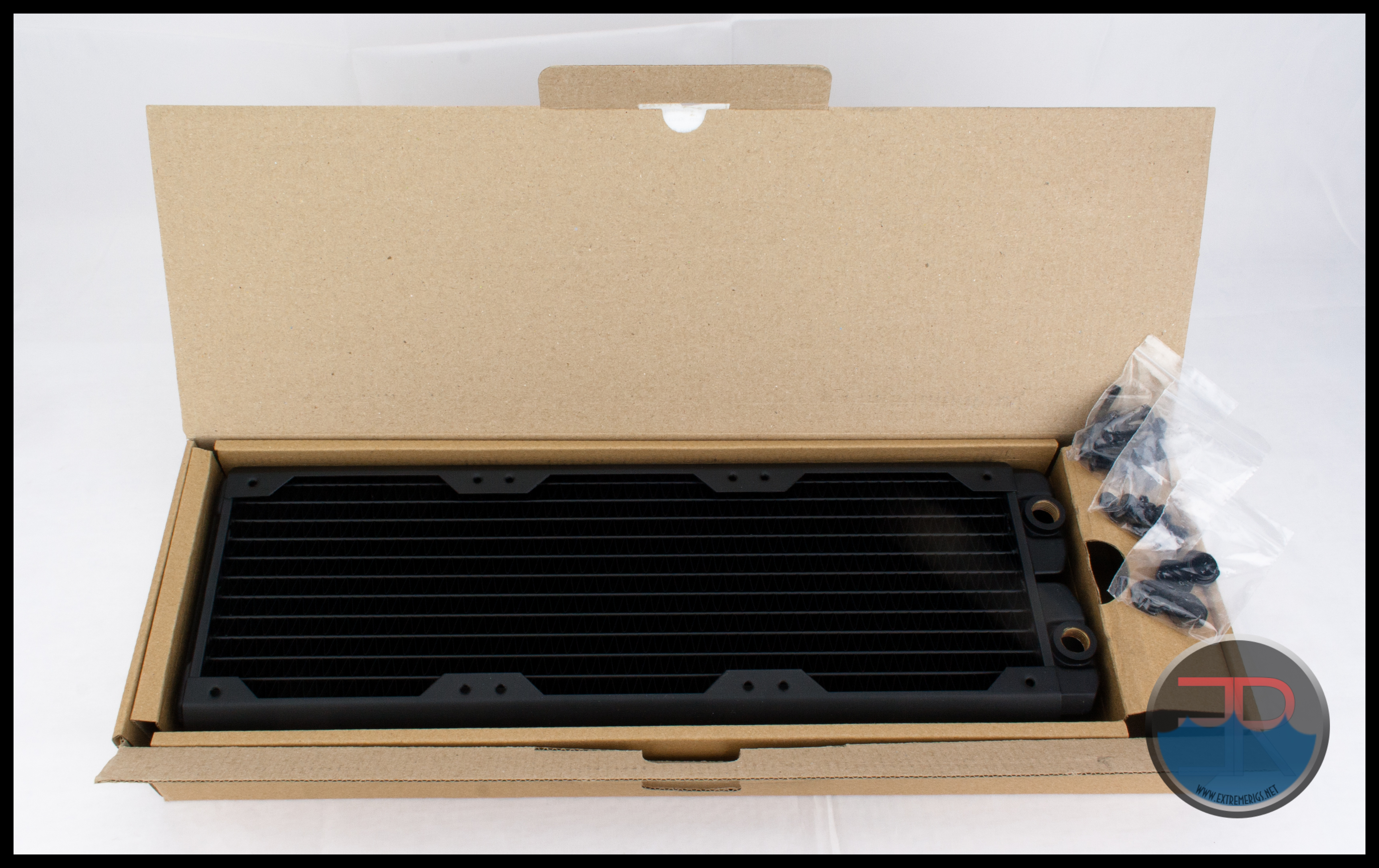
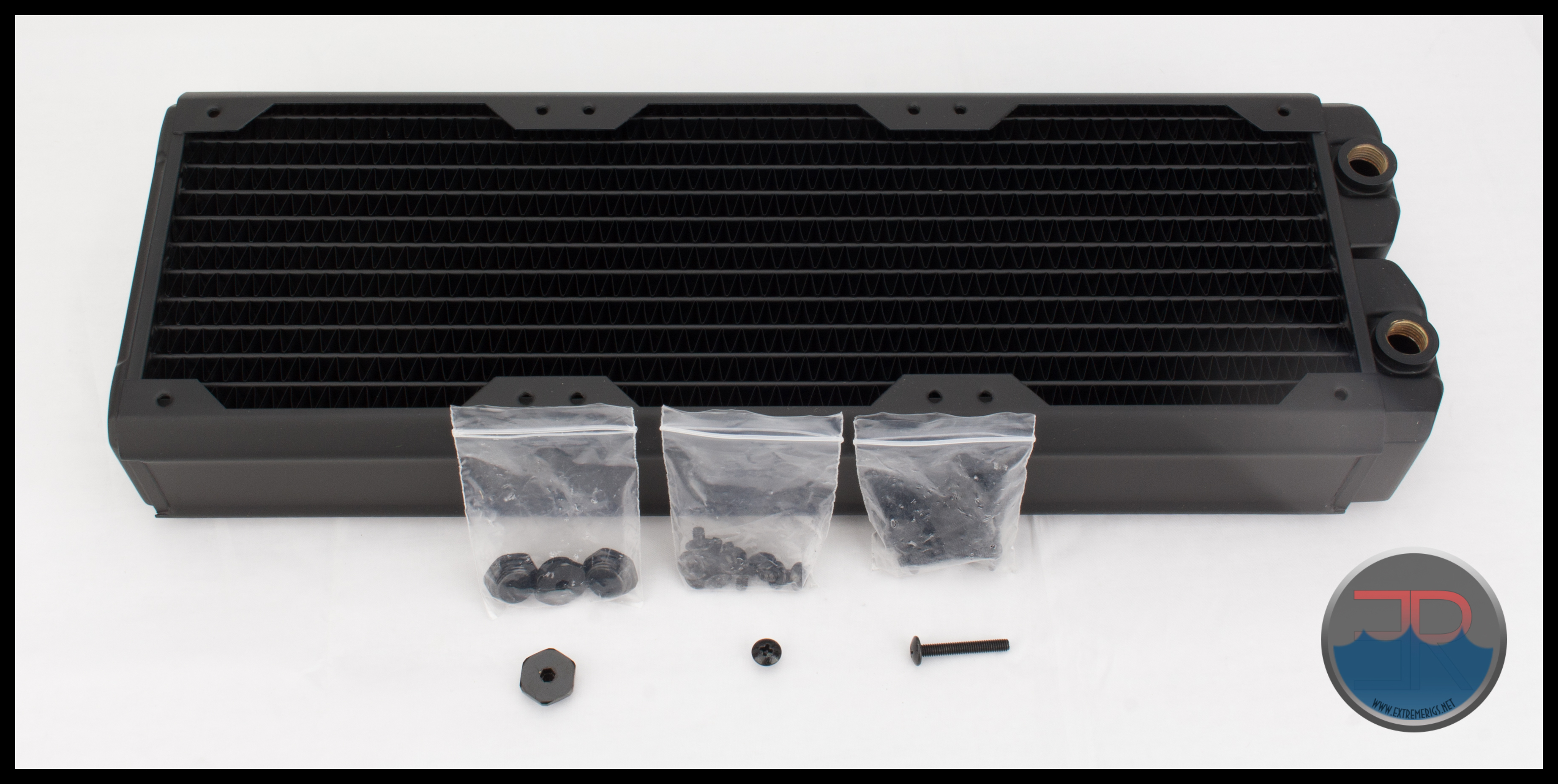
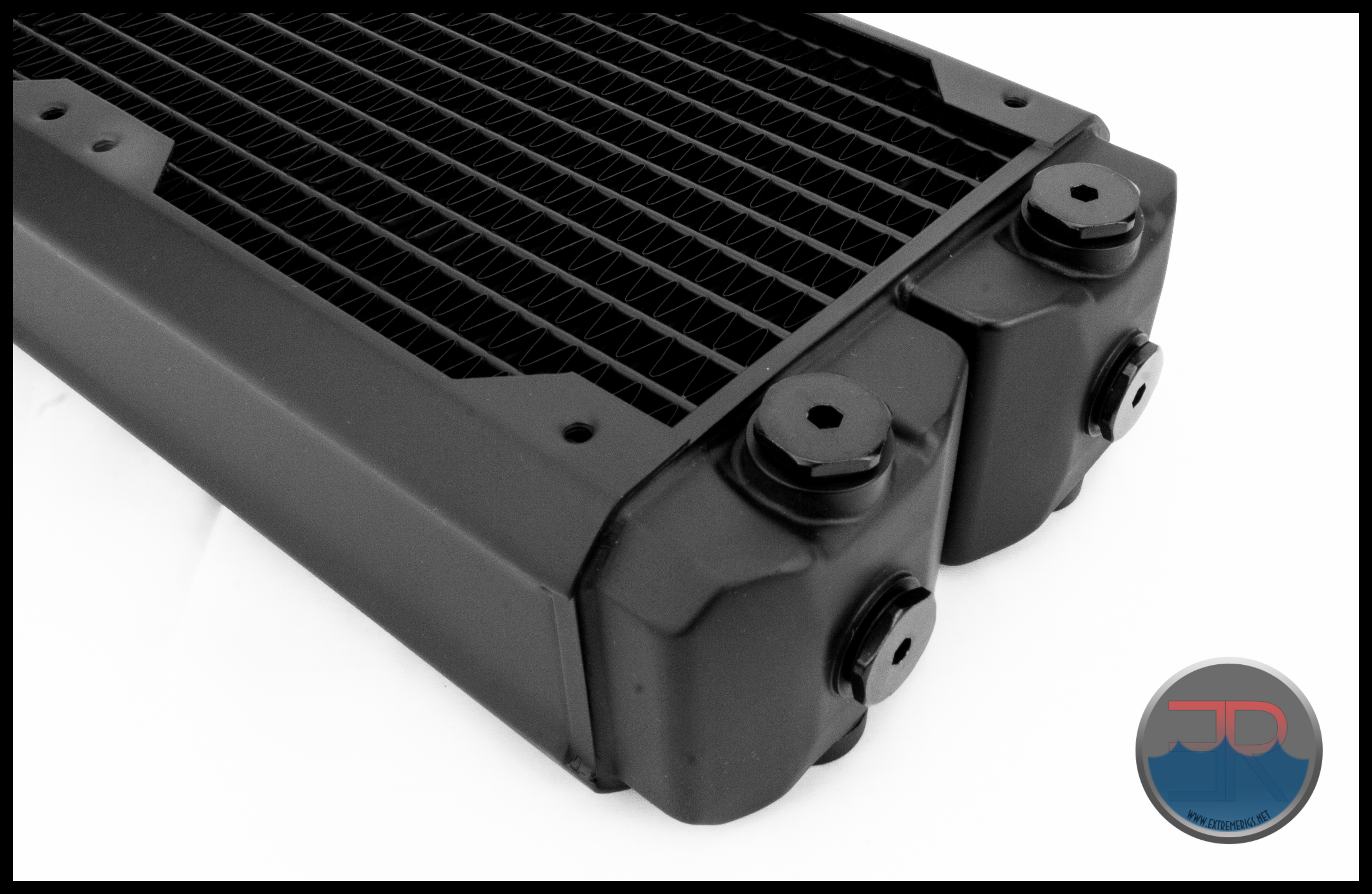



What are these “Opti-flow” versions of radiators? I can find no such variant on Hardware Labs website, only the “XFlow” variety.
Hey Thomas – the “optiflow” refers to radiators where the direction of coolant or airflow matters. “Optiflow” means that the “best” orientation is being tested. It only applies therefore to certain radiators with certain internal structures such as the Nemesis GTX or Black Ice GTX. The SR2 does not have any such directionality
Also on more thing to add – optiflow significantly helps lower flow rates when air flow is higher. If you run low airflow or high coolant flow then a directional radiator can be more of a pain than a gain.
Ah, thank you!
So between the SR2 and Nemesis GTX which performs better seems to be entirely down to the particulars of your setup then (as the Nemesis seems to straddle the SR2 results with and without opti-flow), will have to reread the Nemesis review as I don’t remember seeing anything about this issue.
Great work, love these reviews and the roundup comparisons (any chance there will be a 140mm variant of it some time too?).
Awesome review thanks for all the hard work!!
Nice review man,
I gotta get me on of this multiport when it comes out
Awesome review, I really want one too.
Great review as always
[…] Nemesis GTS 360 Radiator Hardware Labs Nemesis GTX 360 Radiator Hardware Labs SR-1 360 Radiator Hardware Labs SR2 360 Radiator Koolance HX-360XC 360 Radiator Magicool G2 Slim 360 Radiator Mayhem’s Havoc 360 Radiator […]
[…] a close look at the SR2 240 MP from Hardware Labs. We took a look a pre-production sample of the 360mm version for the round-up, so if the 360mm size is more your flavor be sure to check out it’s full review […]
If you don’t mind? What advice do you have to offer concerning the first model of SR2 radiator performance as compared to the SR2-MP? Is this simply a feature added change with the same performance? Or an attempt at both adding features while improving performance?
The SR2 and SR2 MP have the same core – there *should* be no performance difference and it should only be additional features
[…] up is the SR2 420 MP from Hardware Labs. We’ve already reviewed the 240 mm and 360mm versions of the SR2 MultiPort so be sure to check them out after you’ve finished reading this […]
[…] for sub-800 rpm ultra-stealth fans” which proved to be be an accurate statement when we tested the 360mm version earlier in the year. Will the 140mm perform as well ? We’ll find out how it performs and […]
Comments are closed.